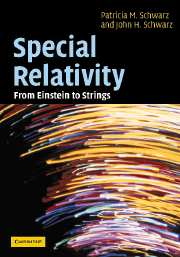Book contents
- Frontmatter
- Contents
- Preface
- Part I Fundamentals
- Part II Advanced Topics
- 7 When quantum mechanics and relativity collide
- 8 Group theory and relativity
- 9 Supersymmetry and superspace
- 10 Looking onward
- Appendix 1 Where do equations of motion come from?
- Appendix 2 Basic group theory
- Appendix 3 Lie groups and Lie algebras
- Appendix 4 The structure of super Lie algebras
- References
- Index
10 - Looking onward
Published online by Cambridge University Press: 06 July 2010
- Frontmatter
- Contents
- Preface
- Part I Fundamentals
- Part II Advanced Topics
- 7 When quantum mechanics and relativity collide
- 8 Group theory and relativity
- 9 Supersymmetry and superspace
- 10 Looking onward
- Appendix 1 Where do equations of motion come from?
- Appendix 2 Basic group theory
- Appendix 3 Lie groups and Lie algebras
- Appendix 4 The structure of super Lie algebras
- References
- Index
Summary
In the previous chapters we have occasionally included remarks about advanced topics. For example, we mentioned that the relativistic description of gravity requires an extension of special relativity, called general relativity. We also referred on occasion to the standard model of elementary particles and some of its properties. We described basic facts about supersymmetry, but we did not pursue how it might fit into a realistic theory. References were also made to string theory, which is the leading approach for constructing a fully unified quantum theory of particles and forces. In this chapter we will say a little more about each of these topics. The purpose is to convey a general impression and to whet the reader's appetite for exploring them further. The chapter concludes by discussing some important unsolved problems.
Relativity and gravity
When Einstein formulated special relativity he understood that a relativistic generalization of Newton's theory of gravity was not a simple matter. Rather, it requires new concepts and a new mathematical framework. Einstein dedicated himself to this project during the subsequent decade, which culminated in 1916 with a new theory of gravity, which he called general relativity. As will be discussed below, general relativity makes testable predictions for new phenomena that are not accounted for in Newton's theory. Some were verified right away and others in more recent times. At present, general relativity is tested to good precision (better than 1 percent in some cases) and no discrepancies have been observed.
- Type
- Chapter
- Information
- Special RelativityFrom Einstein to Strings, pp. 312 - 348Publisher: Cambridge University PressPrint publication year: 2004



